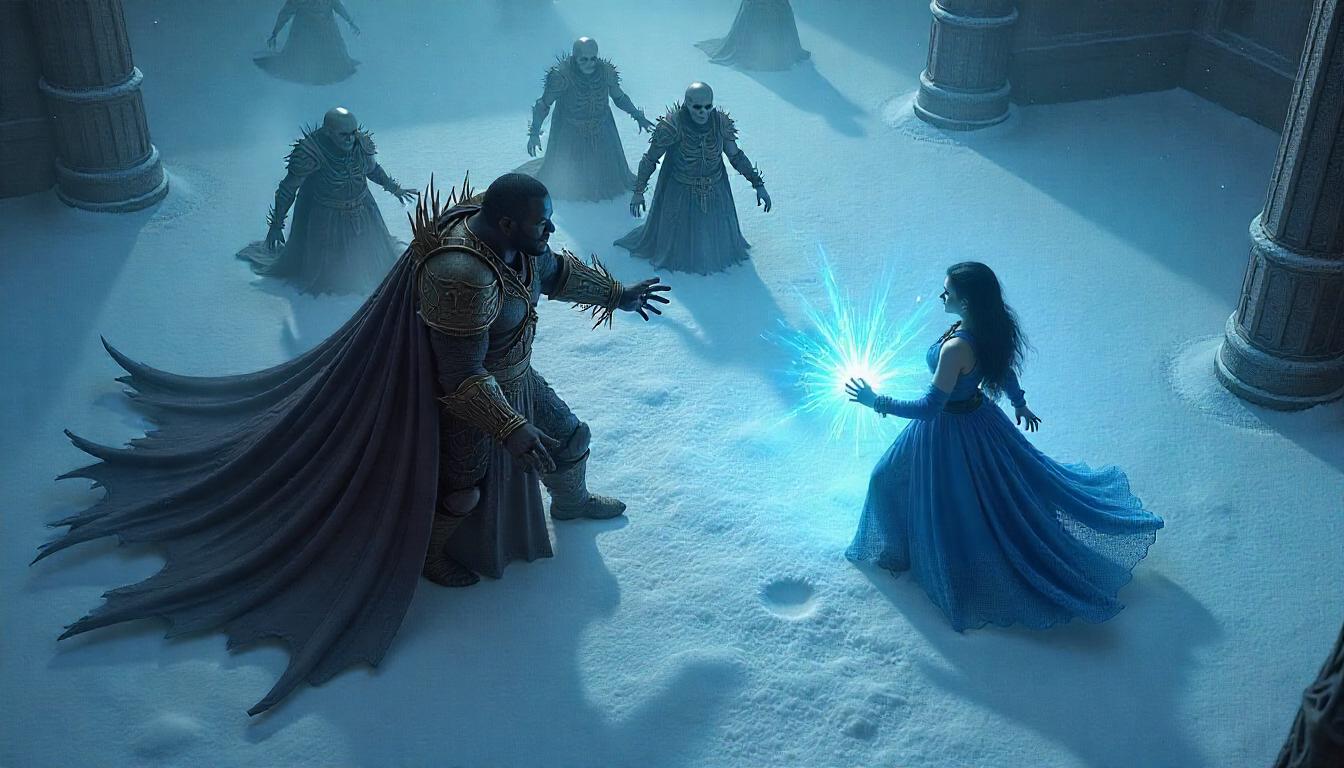Diablo 4’s Player vs. Player (PvP) mechanics introduce a new level of complexity and strategy to the franchise, emphasizing precision, timing, and adaptability. The game’s PvP modes challenge players not only to understand their class’s strengths and weaknesses but also to anticipate and counter their opponent’s strategies. In this breakdown, we will dissect the key mechanics that every competitive player needs to master.
1. Core PvP Mechanics: The Foundation of Combat
At the heart of Diablo 4’s PvP lies its combat system, which is more intricate than ever before. Players need to be proficient in several core mechanics to succeed in PvP:
- Resource Management: Unlike PvE, where resources like mana or energy can be used more liberally, PvP demands careful management. Every skill you cast consumes valuable resources, and wasting them can leave you vulnerable. Mastering resource regeneration and knowing when to hold back or unleash your most powerful abilities is essential.
- Crowd Control (CC): Stuns, slows, and immobilizations are some of the most powerful tools in PvP. These abilities, when used strategically, can dictate the pace of a battle. Learning to counter CC or use it to your advantage can turn the tide of any engagement.
- Positioning: In Diablo 4’s PvP, positioning can mean the difference between life and death. Being in the right place at the right time allows you to deal maximum damage while minimizing the risk of being overwhelmed. Whether it’s using terrain for cover or positioning yourself to intercept enemy movements, smart positioning is a hallmark of any skilled PvP player.
- Cooldown Management: Each class in Diablo 4 has powerful abilities that can change the outcome of a fight, but they often come with long cooldowns. Efficient use of cooldowns, knowing when to use them for defensive or offensive purposes, and understanding your opponent’s cooldowns can give you a significant edge in PvP encounters.
2. Class Balance and PvP
The diversity of classes in Diablo 4 adds a layer of tactical depth to PvP. Each class has unique strengths, weaknesses, and playstyles that can drastically impact how they perform in PvP. Here’s a breakdown of how class balance affects competitive play:
- Damage Dealers (DPS): Classes like the Barbarian and Sorceress excel at high burst damage but can be fragile without protection. Players need to choose when to go all-in with offensive abilities or when to retreat and regenerate resources. Playing a DPS class requires constant awareness of your surroundings and quick reflexes.
- Tanks: Tank classes, such as the Druid, are built to absorb damage and control the battlefield. In PvP, their role is often to disrupt the enemy’s positioning and protect teammates. A good tank player will know how to use crowd control and positioning to disrupt enemy formations, forcing them into unfavorable positions.
- Support: Classes with healing and buffing capabilities, like the Paladin, may not deal the most damage, but they can dramatically affect the outcome of a fight. Knowing when to heal, when to provide buffs, and when to step back and play a more defensive role is key for a support player. Effective communication and positioning are also critical to a successful support role in PvP.
3. PvP Strategy: Outplay Your Opponent
PvP in Diablo 4 isn’t just about raw power; it’s about using your abilities wisely, reading your opponent’s moves, and making tactical decisions that shift the battle in your favor. Here are some strategies to consider:
- Adapt to the Meta: PvP in Diablo 4 will evolve over time as the meta shifts with balance changes and new patches. Staying up to date with class changes and understanding the strengths and weaknesses of different classes is critical. A strategy that works today may not work tomorrow, so flexibility is key.
- Zoning and Kiting: Skilled PvP players know how to control space. Zoning refers to positioning yourself in such a way that you limit your opponent’s options and force them into a corner. Kiting involves leading an opponent away from their preferred range, making it harder for them to land critical hits. Both tactics require a deep understanding of enemy abilities and how they interact with your own.
- Engage and Disengage: PvP often revolves around choosing the right moments to engage or disengage. Initiating a fight with a well-timed burst can leave your opponent reeling, while knowing when to retreat and regroup can save your life. Recognizing when the tide of battle has shifted is essential to preserving your resources and health.
- Synergy with Teammates: In team-based PvP, synergy is everything. Whether you’re in a group arena match or a larger scale battle, understanding how your abilities can complement those of your teammates is a game-changer. A well-timed healing spell or a well-placed CC can turn an uneven fight into a victory.
4. PvP Zones and Maps: Understanding the Battlefield
Diablo 4 introduces various PvP zones, each with its own set of challenges and opportunities. Knowing the layout of each map and the environmental factors can greatly affect your performance.
- Hazard Zones: Some areas may have environmental hazards that can damage or impede movement. Being aware of these hazards and using them to your advantage (or avoiding them entirely) is crucial in competitive PvP.
- Map Control: Certain maps may offer strategic locations, like high ground or narrow chokepoints, that give players an advantage. Securing these spots can provide vision, better positioning, and control over the flow of battle.
5. The Importance of Adaptability
The key to success in Diablo 4’s PvP modes is adaptability. Players must constantly assess the battlefield, adapt to the evolving tactics of their opponents, and modify their own strategies on the fly. A player who can think several steps ahead and stay calm under pressure will always outperform one who relies solely on brute force.
Conclusion
Mastering Diablo 4’s PvP mechanics requires more than just knowing your class abilities—it demands a tactical approach to combat, resource management, positioning, and constant adaptation. Whether you’re a seasoned player or new to PvP, understanding these mechanics will elevate your competitive play and help you stay ahead of the curve in Diablo 4’s intense and dynamic PvP environment.
4o mini






Leave a Reply